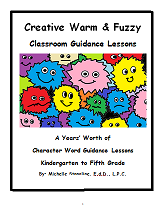Sarah's Sand Tray Therapy Final Exam: Italian Culture
by Sarah
(Sand Tray Therapy Class Student)
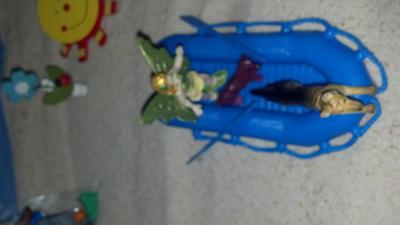
Sarah's Sand Tray Therapy Final Exam: Italian Culture
My sand tray therapy theory stems from the multicultural project I completed and the target population I hope to work with upon completing the master’s program. The project focused on the Italian culture and its symbols/superstitions. Upon exploration of these symbols I noticed common themes of safety, comfort, fear, and protection. These themes appeared to fit well with my desire to work with abused and traumatized children/adolescents in my future. Ideally, I would work for a child advocacy center in a therapeutic capacity, utilizing creative interventions to include sand tray therapy.
Trauma can be defined as a sudden unexpected non-normative event that overwhelms the person’s capacity to cope. Victims of trauma are debilitated by their loss of control in the situation. As a result of their abuse/trauma, they may experience symptoms of PTSD, depression, sexual behavior problems, and/or generalized aggression. Females tend to exhibit more internalizing features (anxiety, depression, dissociation, avoidance) while males tend to have more externalizing behaviors or anger. Depression may manifest itself through a lack of motivation or energy, self-isolation from social contact, sadness, crying, lethargy, suicidal thoughts/gestures, or lack of joy.
When providing counseling for abused and traumatized children, six core components of treatment have been identified by the therapeutic community (National Child Traumatic Stress Network). The first core component is safety through ensuring that the child feels cared for. In order to achieve this goal, therapists may take a fairly active approach through advocacy and case management to ensure that the child is safe both at school and at home. Predictability of the child’s therapy environment is also an important component involved in helping the child feel safe and therapists will continuously assess the child. Therapists may engage in crisis intervention with parents (if they are not the perpetrators) and may guide them in how to best support their child throughout the therapeutic process. The next core components include helping the child modulate arousal (self-regulation) through trauma focused work, self-reflective information processing, resolution of the traumatic experiences (integration), relational engagement to include appropriate attachments, and enhancing the self-worth of the child.
Sand tray therapy work could be utilized to work on any one of these core components of treatment. When engaging in a sand tray activity, children are in total control of their environment. Ideally they feel safe in their surroundings and therefore are able to express themselves without saying a word. A wonderful aspect of sand tray work is that children and adolescents are healing themselves with minimal contribution by the therapist. The therapist is able to lay the groundwork for a therapeutic and healing environment. Sand tray also offers children opportunities to contain, master, and regain personal control. It is intrinsically pleasurable, user friendly, and allows for safe distance, assisting in communication between therapist and child.
The proposed lesson plans may be utilized for child and adolescent victims of abuse/trauma. They center on the concepts of safety, fear, and protection. They may be used as assessment tools to determine how an individual is feeling, to identify areas to focus on in therapy, or to assess the individual’s internal resources. Additionally, the lesson plans may be used for adults facing a variety of difficulties. The following lesson plans all require a sand tray, sand, and a variety of miniatures.
-Title: What Makes You Feel Safe?
-Population of Disorders to Address: Child and Adolescent Victims of Child Abuse/Trauma
-Directions: This sand tray activity may be utilized throughout the course of treatment. It may be used at the beginning of treatment to assess the extent to which the child is feeling safe in his/her world and to explore the child’s safety resources. It may also be utilized throughout treatment to determine how the child is feeling about his/her environment and to explore how the child’s concept of safety is evolving throughout the therapeutic relationship. In the Italian culture, symbols or amulets are often used as protective/safety elements from perceived evils. When working with clients, it is important to be aware of their cultural background and it may be helpful to provide culturally relevant miniatures for use in this sand tray.
This activity begins with a directive from the therapist toward the child/adolescent. The therapist instructs the client to create a sand tray illustrating what makes them feel safe in their world. The therapist allows the client to interpret this directive in whatever way they wish and allows them ample time to create the sand tray in silence. The therapist is mindful of the order in which the miniatures are placed in the sand tray as well as hotspots within the tray. The therapist observes the creation of the sand tray and processes the sand tray with the client upon completion, allowing the client to share as much or as little as they’d like.
-Title: Flight, Fight, or Freeze!
-Population of Disorders to Address: Child and Adolescent Victims of Child Abuse/Trauma
-Directions: Fear describes a specific and sudden danger to your physical well-being. When fear passes, we often feel relief. Our emotional brains react immediately to defend against a possible threat, and then later we can comprehend the situation more fully and decide on the best action to take. The purpose of fear is to protect us from danger. Fear causes a variety of reactions depending on the intensity, timing, and coping options available. The reactions include: freezing in place and feeling terror if the danger is unavoidable; running or escaping from danger; sharply focusing attention and preparing to react to the danger; panicking; and fighting to destroy the object of fear. Fear also often causes cold hands, deeper and more rapid breathing, increased heart rate, increased blood pressure, sweating, dry mouth, and trembling or tightening of the muscles, especially in the arms and legs. We estimate the risks and vulnerability of the threat almost instantly and then fight, freeze, focus, or flee based on this assessment.
Victims of abuse or trauma may have various fears that cause them to experience anxiety on a regular basis. They may have been conditioned to fear certain things that act as triggers and remind them of their trauma. Identifying these fears is an important step in normalizing the experience for them and decreasing their anxiety. It is important for children and adolescents to understand that fear/worry/anxiety is a normal and self-protective feeling for them to experience. Once clients are able to identify their fears, they can begin to distinguish between the rational and irrational ones. They can also begin the process of further understanding these fears.
Upon beginning this sand tray activity the therapist will, in developmentally appropriate terms, explain the biology of fear to include the flight, fight, or freeze responses to fearful stimuli. The therapist will then instruct the client to create a scene in the sand of things that make them freeze, fight, or escape (things they are afraid of). The therapist will provide a variety of miniatures in order to facilitate this tray creation. The client will be provided with ample quiet time to complete the sand tray and then the tray will be processed, allowing the client to share as much or as little as he/she would like regarding the tray.
-Extension: This activity may also be appropriate for adults and individuals experiencing anxiety, depression, or specific phobias. It may be best utilized during the working phase of treatment once the therapeutic relationship has been established and the client feels safe and trusting towards the therapist.
-Title: Self Defense
-Population of Disorders to Address: Adolescent Victims of Child Abuse/Trauma
-Directions: Part of the healing process of individuals who have experienced abuse or trauma involves identifying ways to protect themselves from further trauma. Individuals will process their trauma and will develop/maintain healthy attachments and enhance their self-worth. Having ways to protect themselves both physically and emotionally will be an important part of the healing process. Some individuals may also address spiritual protection, depending on their cultural background. For example, in the Italian culture there is a belief in the “malocchio” or evil eye which is evil thoughts by individuals who are envious or jealous toward another. Italian individuals often protect themselves from this evil eye by wearing amulets/charms such as the mano cornuto or the corno. When working with culturally diverse clients, it may be appropriate to provide them with miniatures that reflect these beliefs.
The therapist will begin this sand tray activity with an exploration of what the term self-defense means for the client. The therapist will then explain that self-defense can be physical, emotional, or psychological. The client will next be instructed to create a sand tray illustrating how he/she protects himself/herself. The therapist will allow the client ample quiet time to complete the sand tray. Once the tray is completed, the therapist will process it with the client. Based on the tray, the therapist may be able to identify some of the client’s internal resources for self-protection.
-Extension: This type of tray may also be utilized for adults who have a history of strained relationships or co-dependent relationship patterns. Individuals who struggle with self-care may also benefit from this sand tray.
Disclaimer: This website and its content is intended for trained licensed mental health professionals and school certified mental health professionals to use for their clients / students at their own discretion.
*If you ignore the disclaimer above are using these techniques on yourself and you feel any discomfort or upset it is highly suggested that you seek out a licensed mental health professional immediately.
"Beyond Art Therapy" is the concept from Dr. Stangline that combines all creative fields in therapy. It is not the traditional "art therapy" but goes beyond to include sand tray therapy, play therapy, mindfulness, meditation, color therapy, cognitive behavioral therapy, and a vast majority of other therapies.
For any other type of mental health emergency call your local 911 / Police Number immediately.
Dr. Stangline does not offer advice / suggestions to anyone who is not a professional mental health provider, or a student who is studying this field and has questions about mental health programs of study.
See our Exciting Selection of eBooks:
Award Winning:
Creative Counseling 101 eBook
Our Best Seller!
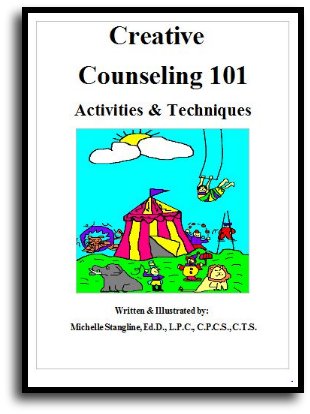
Step By Step Therapy:
Learn how to be a more Creative Therapist with the Book that started it all!
- Graduate School Counseling book used by hundreds of graduate counseling students!
- Includes full color reproducible worksheets with most activities.
- Winner of the Counselor Writer of the Year Award, 2011, Georgia Regional Award
Download Your Copy Today Only $39.95:
See Creative Counseling 101 eBook Information Here:
Get the Set
of all four
eBooks for only $98.95:
An incredible collection of how to do therapy eBooks!
A $159.80 Value,
You Save Over $60!
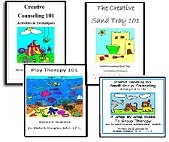
Get your complete set of the Creative Counseling 101.com eBooks by Dr. Michelle Stangline for only $98.95, that's less than $25.00 per eBook (Regular Price is $39.95 for each eBook.).
Your complete set includes:
- Creative Counseling 101
- Creative Group Counseling 101
- Creative Play Therapy 101
- Creative Sand Tray 101
For more information click the link below:
See Complete Set of eBooks For Sale Here:
New!!! "Beyond Art Therapy" 101 eBook
Over 300 pages of Beyond Art Therapy activities and techniques. Learn what I teach graduate counseling students!
See the link below for more information.
Only $39.95
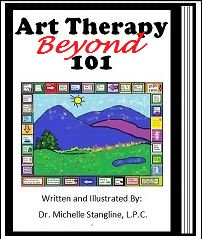
See More Invividual eBooks For Sale:
Sand Tray Therapy 101 eBook:
Learn how to do Sand Tray Therapy or enhance your skills.
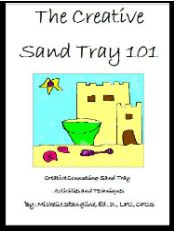
Play Therapy 101 eBook
Learn how to do play therapy or enhance your skills.
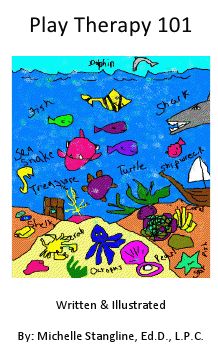
Small Group Counseling eBook For Sale:
Learn how to do creative group therapy and enhance your skills.
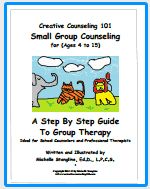
School Counselor Guidance Lesson & Social Stories eBook for sale:
Get a year's worth of school counselor guidance lessons with "Creative Warm & Fuzzy Classroom Guidance Lessons eBook". Introduce your students to the "Warm & Fuzzy Way". Click the link below for more information:
Warm & Fuzzy School Counselor Guidance Lessons eBook
